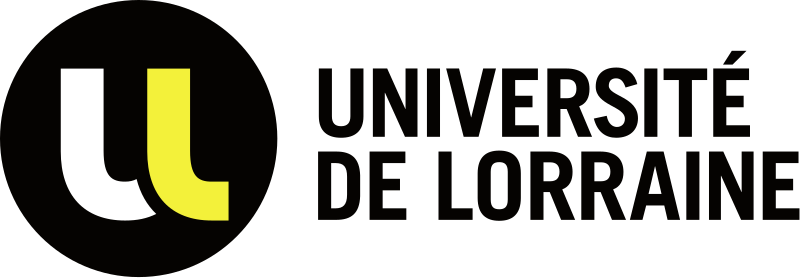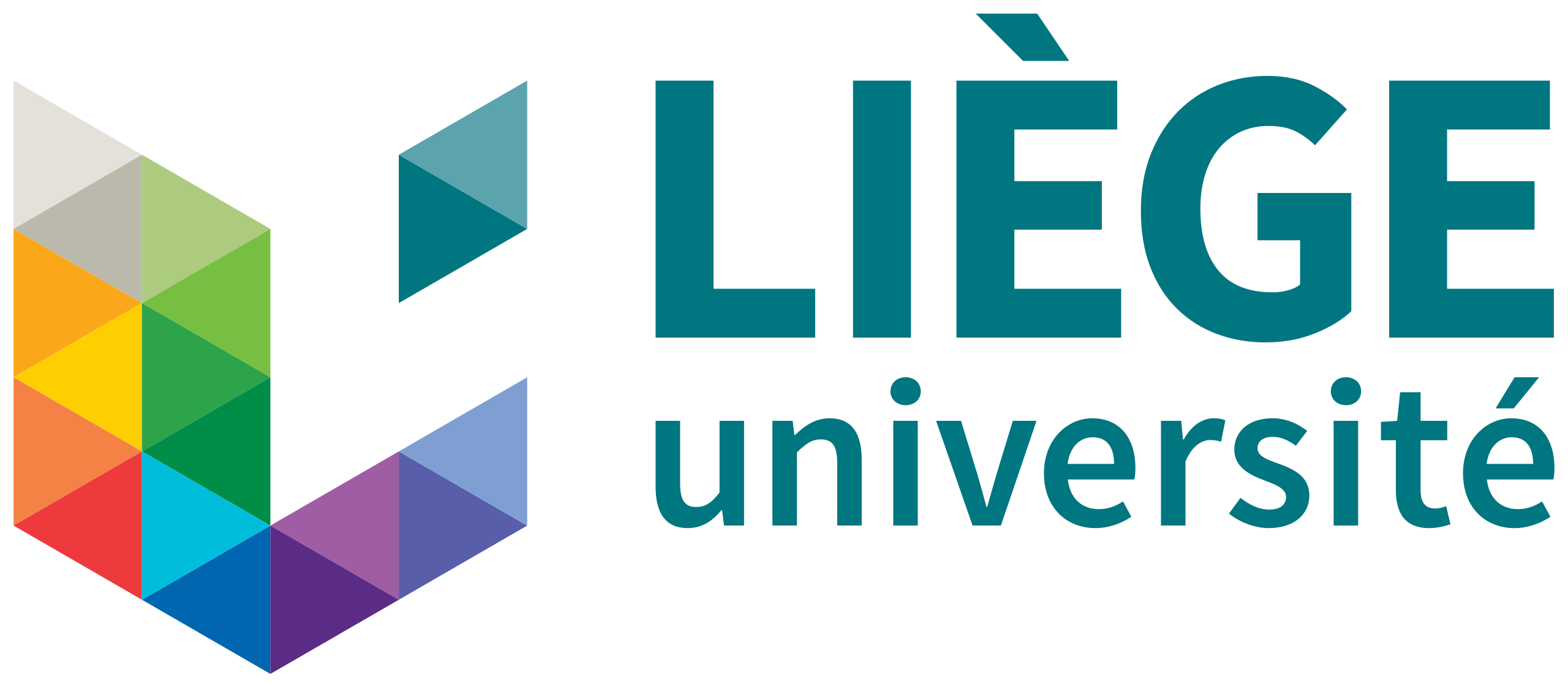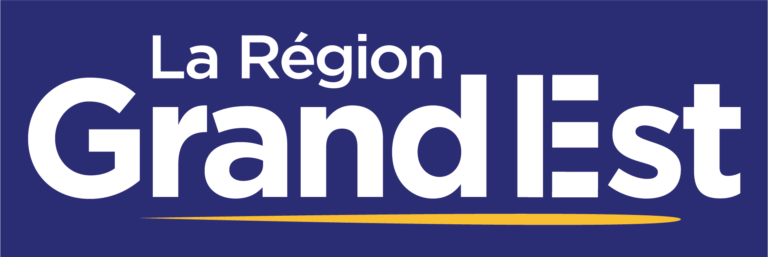Program for the Liège Workshop - November 6-8
You can follow the conference live here.
Monday 6 November 2023
| 9:00—9:30 |
Welcome |
| 9:30—10:40 |
Gerhard Heinzmann (Université de Lorraine)
Intuitive Roots of Mathematical Understanding |
| 10:40—10:50 |
Coffee Break |
| 10:50—12:00 |
Nicolas Michel (Bergische Universität Wuppertal)
The Geometrical Gaze: On H.G. Zeuthen’s Holistic Conception of Mathematical Intuition |
| 12:00—13:30 |
Lunch |
| 13:30—14:40 |
Jemma Lorenat (Pitzer College)
Anxiety, Deceit, and Intuition about Geometrical Figures around 1900 |
| 14:40—14:50 |
Coffee Break |
| 14:50—16:00 |
Christophe Eckes (Université de Lorraine)
What Part does Rational Intuition Play in Louis Couturat’s Reflections on the Ideas
of Number, Magnitude and Order? |
| 16:00—16:10 |
Coffee Break |
| 16:10—17:20 |
Andrea Ariotto (Sorbonne Université)
Jean Cavaillès’ Conception of Mathematical Intuition: Between Historicization and Symbolic Thought |
Tuesday 7 November 2023
| 9:00—9:30 |
Welcome |
| 9:30—10:40 |
Daniel Usma Gomez (Université de Lorraine)
Intuition as Imagination: The Case of Aquinas’ Philosophy of Mathematics |
| 10:40—10:50 |
Coffee Break |
| 10:50—12:00 |
Valeria Giardino (CNRS, Institut Jean Nicod)
Intuition and Imagination in Mathematics |
| 12:00—13:30 |
Lunch |
| 13:30—14:40 |
Faustine Oliva (Aix-Marseille Université)
From Maps on Paper to Bits in Computers: Which Proof of the Four Color Theorem
is the Most Intuitive? |
| 14:40—14:50 |
Coffee Break |
| 14:50—16:00 |
Andrew Arana (Université de Lorraine)
Intuition from the Perspectives of Kitaro Nishida and Gaisi Takeuti |
| 16:00—16:10 |
Coffee Break |
| 16:10—17:20 |
François Charton (META)
Can Mathematics be Learned from Examples Only? Experimenting with Language Models |
Wednesday 8 November 2023
| 9:00—9:30 |
Welcome |
| 9:30—10:40 |
Paola Cantù (CNRS, Aix-Marseille Université)
Intuition and Axiomatics: the Case of non-Archimedean Continuity |
| 10:40—10:50 |
Coffee Break |
| 10:50—12:00 |
Tabea Rohr (CNRS, Paris Cité)
Frege and Hilbert on Kant‘s Notion of Anschauung |
| 12:00—13:30 |
Lunch |
| 13:30—14:40 |
Romain Büchi (University of Zürich)
Intuitive Conjectures |
| 14:40—14:50 |
Coffee Break |
| 14:50—16:00 |
Matthew Inglis (Loughborough University)
Methods for Eliciting the Mathematical Intuitions of Mathematicians and Students |
| 16:00—16:10 |
Coffee Break |
| 16:10—17:20 |
Jessica Lajos (Utah State University)
An Updated Conceptualization of the Intuition Construct for Mathematics Education Research |
Abstracts
Paola Cantù (CNRS, Aix-Marseille Université): Intuition and Axiomatics: the Case of non-Archimedean Continuity
Does Archimedes’ axiom express all what there is to our intuitive notion of a spatial continuum? If not, what does it express? And what alternative axioms can be considered as compatible with our intuition of space? The paper deals with questions raised by Veronese’s non-Archimedean geometry and compared with answers given at the turn of the twentieth century.
Nicolas Michel (Bergische Universität Wuppertal): The Geometrical Gaze: On H.G. Zeuthen’s Holistic Conception of Mathematical Intuition
The Danish mathematician Hieronymus Georg Zeuthen (1839-1920) is today mostly remembered for his crucial contributions to algebraic geometry and to the history of mathematics. Lesser known are his forays into the philosophy and psychology of mathematical cognition, and his original defence of a holistic conception of mathematical intuition–views expressed mostly in his twilight years, and in texts written exclusively in Danish.
For Zeuthen, the proper use of intuition–understood as a method for assessing and securing mathematical knowledge–fares advantageously in comparison to the use of symbolic devices, be they computational or logical. What’s more, Zeuthen claimed, intuition plays an essential role in the historical and psychological formation of mathematical objects and theories–knowledge of which algebraic computations or logical derivations only translate, but never outright produce.
This paper aims to articulate the relation between these general claims and Zeuthen’s position at the confluence of various major scientific trends at the turn of the century. One is, of course, the development of enumerative geometry in the second half of the 19th-century–the branch of geometry of which Zeuthen was widely recognized as a leading expert. Others, more surprisingly, include the specific blend of Bergsonian philosophy made popular in Danish academic circles by Harald Høffding, as well as the rise of Gestalt psychology. Lastly, this paper will situate Zeuthen’s conception of mathematical intuition in relation to those, more familiar to us, of Henri Poincaré and L. E. J. Brouwer.
Jemma Lorenat (Pitzer College): Anxiety, Deceit, and Intuition about Geometrical Figures around 1900
Faced with the potential unreliability of geometrical figures, mathematicians adopted a range of coping strategies. Some avoided figures, others issued general warnings, and some carefully distinguished the distorted from the real in the text around a figure. This latter practice–the emphasis of this talk–characterized the representation of point singularities in algebraic geometry, but could be successfully exported to other areas of geometry (and topology) as demonstrated by the mathematicians training and practicing at Bryn Mawr College at the turn of the twentieth century. By explaining precisely how to read figures, these extra textual tools could be representational, notational, intuitive, and dependable.
Christophe Eckes (Université de Lorraine): What Part does Rational Intuition Play in Louis Couturat’s Reflections on the Ideas of Number, Magnitude and Order?
It is now well established that the philosopher and mathematician by training Louis Couturat (1868-1914) first tried, in De l’infini mathématique (1896), to base mathematics in general and analysis in particular on the idea of magnitude (as a rational intuition), before defending a form of logicism inspired by Bertrand Russell and thus marginalizing the role of any intuition in the genesis and foundations of mathematics-see in particular Les principes de mathématiques (1905). We intend to shed new light on this evolution, by showing that between 1896 and 1905, Couturat faced exactly the same questions: what are the ideas that serve as the foundations of mathematics? How can we understand their mutual relationships? We will argue that Couturat borrows these questions from Antoine-Augustin Cournot (1801-1877). What’s more, while he initially remained attached to a classical image of mathematics dominated by the idea of magnitude, Couturat was gradually led to admit that a substantial part of mathematics involves ideas of order and situation between objects. In our view, this helps to explain why, from 1898-1901 onwards, he began to distance himself from a classical image of mathematics and, as a consequence, eventually rejected any Kantian legacy in the philosophy of mathematics.
Andrea Ariotto (Sorbonne Université): Jean Cavaillès’ Conception of Mathematical Intuition: Between Historicization and Symbolic Thought
This talk aims to expose Cavaillès’ notion of mathematical intuition and the link of this notion with the form of historicity on which basis he describes mathematical thought. While many scholars have argued that, in Cavaillès’ philosophy, intuition is historicized, I aim to precisely understand how this historicization of intuition should take place as well as the notions of intuition and historicity it presupposes.
First, I situate Cavaillès’ standpoint at the crossroads of Brunschvicg’s Neo-criticism and Husserlian phenomenology. Then, I present Cavaillès’ critique of the late Husserl’s perspective on the historicity of mathematics, in order to show the notion of historicity Cavaillès seems to have in mind. I suggest that the comparison with late Husserl’s standpoint is partially misleading. Instead, I propose to compare Cavaillès’ view on historicity, based on the analysis of Dedekind’s Habilitationsschrift (1854), with early Husserl’s philosophy of mathematics and, in particular, with the Göttinger Doppelvortrag (1901). The problem of domain extension and generalization of operations through the introduction of ideal elements provides in fact a crucial example to understand the growth of mathematical knowledge Cavaillès aims to capture. In the conclusion of my talk, I show that the kind of historicization of mathematical intuition proposed by Cavaillès leads us to take into account how the symbolic character of mathematical objects relates to the notion of intuition. In Cavaillès, such a discussion stems from the analysis of Hilbert’s philosophy of the sign, which sheds light on Kantian schematism and allows Cavaillès to correct the Kantian notion of intuition. I try to develop some of Cavaillès’ reflections on this point and support them with Cassirer’s analysis of the role of signs in mathematical theories.
Daniel Usma Gomez (Université de Lorraine): Intuition as Imagination: The Case of Aquinas’ Philosophy of Mathematics
Valeria Giardino (CNRS, Institut Jean Nicod): Intuition and Imagination in Mathematics
In previous work, I defended the claim that representational “cognitive tools” – for ex. diagrams or notations – are very useful in mathematics because they trigger in experts a specific form of imagination that we defined as manipulative (De Toffoli & Giardino, 2014; Giardino, 2018). If this is true, then the practice of mathematics–traditionally the most abstract and disembodied of the sciences–implies the appeal to intuition of the space and of the dynamics of concrete objects, which are intended to represent abstract objects. The aim of this talk will be to discuss some views that can be put forward to account for this form of reasoning in mathematics by considering it in analogy with the use of models, a subject of lively debate in philosophy of science.
Faustine Oliva (Aix-Marseille Université): From Maps on Paper to Bits in Computers: Which Proof of the Four Color Theorem is the Most Intuitive?
Early proofs and attempted proofs of the Four Color Theorem include figures ranging from map drawings (Kempe, 1879) to graphs (Appel and Haken, 1977, Robertson and al. 1997). These figures serve two main purposes. On the one hand visual representations illustrate the ideas underlying the proof and help the mathematician to follow and understand the reasoning. On the other hand visual intuition guides the mathematician in the design of the proof. The Coq’s formalization of the proof of the Four Color Theorem (Gonthier, 2005) doesn’t include figures. The aim of this formalization in a programming language is to make the proof checkable by the proof assistant. All the formalization choices are therefore made to facilitate the work of the computer which is devoid of any ability akin to intuition. It seems that the formalization in the environment of the proof assistant is incompatible with the possibility of taking advantages of the mathematician’s intuition. First we investigate the meanings and the roles of intuition involved in early proofs to determine how it can help the mathematician construct and understand a proof. Then we focus on the formalization and examine whether its sole purpose is the computer checkability, or whether it can also give the mathematician new perspectives on the proof and the statement based on some kind of intuition that needs to be defined.
Andrew Arana (Université de Lorraine): Intuition from the Perspectives of Kitaro Nishida and Gaisi Takeuti
On many accounts of mathematical knowledge, intuition is a source. Knowledge of the infinite, then, poses a problem, for it seems difficult to intuit the infinite. In this talk I will discuss Gaisi Takeuti’s account of mathematical knowledge of the infinite. Takeuti was a mathematical logician whose philosophical context drew on the work of Kitaro Nishida, the founder of the Kyoto School of philosophy. I will discuss Nishida’s conception of intuition, show how Takeuti adopted this conception, and explain how Takeuti could use this conception of intuition to give a more expansive account of intuitive knowledge of the infinite than is standard in the philosophy of mathematics since Hilbert.
François Charton (META): Can Mathematics be Learned from Examples Only? Experimenting with Language Models
Deep-learning models can be trained, from examples only, to solve problems of symbolic and numeric mathematics. It is tempting to downplay these results as mere memorization of the training examples. Investigating from three cases, symbolic regression, linear algebra, and integer arithmetic, I show that models trained on examples do learn mathematical abstractions, which they use to solve problems.
Gerhard Heinzmann (Université de Lorraine): Intuitive Roots of Mathematical Understanding
We show in this talk that intuition in mathematics, if interpreted according to the competence model [Heinzmann 2013]—rather than according to the common perception model—can contribute to a better understanding of mathematical activities as well in the context of justification as in the context of invention.
Thus, intuition can be helpful for a better insight into the difference between stringent and explanatory proofs, it can give hints for overcoming the still discussed taxinomy of eliminatory and non-eliminatory structuralism (Parsons), it can be used for charkterizing thought experiments and for determining the aesthetic component in mathematics.
Tabea Rohr (CNRS, Paris Cité): Frege and Hilbert on Kant‘s Notion of Anschauung
Romain Büchi (University of Zürich): Intuitions and the Mathematical Practice of Conjecturing
To make conjectures is an essential part of mathematical practice. A good conjecture can captivate generations of mathematicians and shape the development of entire fields. Just think of Fermat’s Last Theorem, before it became an actual theorem. Despite its importance, the practice of conjecturing has not received the attention it deserves in the relevant literature. Perhaps, this is because conjecturing is typically associated with what are called contexts of discovery. But the philosophy of mathematics, it has been maintained, can only be concerned with contexts of justification. Questions pertaining to contexts of discovery would thus have to be relegated to other disciplines such as psychology or sociology. I will try to show that by holding on to this strict division of tasks one tends to remain blind to what constitutes a veritable ars conjectandi within mathematical practice. The unwritten rules, implicit criteria and intellectual powers at work in the application of this art are a valuable field of investigation for the epistemology of mathematics. To succeed in making fruitful conjectures, various conditions must be fulfilled. Syntactic capacities paired with truth claims are not sufficient. But even if the conjecture is advanced by an expert in the field, or a genius, it might still not be sufficiently justified. In such cases, one has to give further reasons why the suggested claim should be considered probably true and worth investigating. It is possible, and not uncommon, that in the process of trying to corroborate the conjecture, adjustments must be made to its statement. While the conjecture may of course still prove to be false, this need not undermine its fruitfulness. For in mathematics, the refutation of an interesting claim is often the proof of an equally intriguing statement. In this talk, I will focus on the question of how intuition can play a role in rationally forming fruitful conjectures. My considerations will be guided by an example from the history of number theory.
Matthew Inglis (Loughborough University): Methods for Eliciting the Mathematical Intuitions of Mathematicians and Students
If we are to better understand mathematical intuitions it would be useful if we can empirically study them. What methods exist for eliciting intuitions and what can we learn from them. In this talk I review a series of studies that my collaborators and I have conducted on mathematicians’ intuitions, with a particular focus on aesthetics. In particular, I document how using different methods sometimes results in quite different conclusions being drawn about the nature of mathematical aesthetics. I suggest that one possible account for these contradictory results is mathematicians do not have stable intuitions about aesthetics at all.
Jessica Lajos (Utah State University): An Updated Conceptualization of the Intuition Construct for Mathematics Education Research
Intuition continues to be an important yet “slippery concept” for mathematics educators and researchers (Davis et al., 2012, p. 433). In order to improve instruction and conduct communicable studies on student intuition the meaning and usage of the term needs to be addressed. I will present findings from an integrative literature review that aims to reduce some slipperiness and ambiguity surrounding the intuition construct. This work draws from three foundational cores: Fischbein et al.’s corpus and intuitive rules theory (Stavy et al., 2006), concept image/concept definition (Davis & Vinner, 1986), and dual process theory (Kahneman & Frederick, 2002), along with new perspectives, to provide an updated conceptualization of the intuition construct. Overall, findings from this literature synthesis suggest that the construct of mathematical intuition represents a vast class of cognitive-affective phenomenon that can take on opposing attributes. Future directions for mathematics education research at the university level will be discussed.
Organizers
Acknowledgement and Support
These events are made possible by a grant from the Soutien Interrégional à la Recherche of the Grande Région. They are supported by the Fédération Wallonie-Bruxelles and the Région Grand Est. The Nancy workshop is also supported by the Archives Henri Poincaré at the Université de Lorraine.



